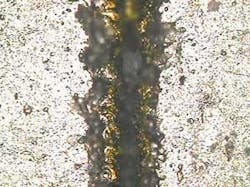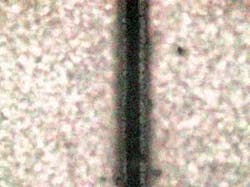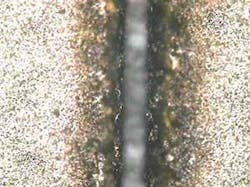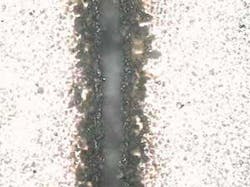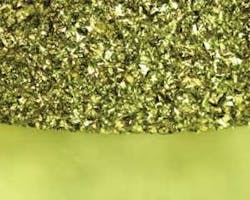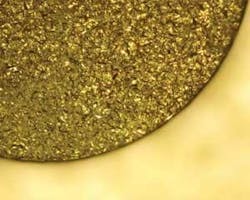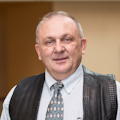Fiber lasers lead the way in processing
We have previously reported on processing a variety of materials using different ultraviolet (UV) lasers (ILS May 2002, September 2002, November 2003, December 2004, December 2006, and February 2007). UV lasers have been used in materials processing applications for about 20 years, and these are still used to achieve the finest feature quality and smallest feature sizes. However, UV lasers are still relatively expensive on a dollars/photon basis, still fairly low in output power, and have finite lifetime-even for diode-pumped solid-state units. Fiber lasers have only been available within the last ten years, and we are finding applications for which we get near-UV quality in materials processing at a fraction of the cost and time needed for UV processing. This article explores two of those applications.-RDS
Fiber lasers are new, hot, fun, and enabling, and they can be used to enhance profitability in many applications. They come in many different varieties and are commercially available in output powers from a few watts to many kilowatts, with the fundamental wavelength around 1-2 µm. Fiber lasers can be purchased with pulse lengths well below 1 ns to many milliseconds. So, with this large complement of available sources, it is reasonable to confine our discussion to low-power lasers with about the same output power and pulse length as available UV sources.
With this in mind, we have chosen the IPGYLR-1/100/20/20 ytterbium fiber laser for our comparisons. This laser has a nominal output of 20 W Q-switched between 20 and 80 kHz and a pulse length of about 100 ns, so the output characteristics (except for wavelength) are similar to most UV diode-pumped solid-state (DPSS) lasers. The fiber laser, however, is much smaller, much less expensive, and has a much longer operating lifetime.
Because PhotoMachining is a small, private company, when we spend more than $100,000 on a “light bulb” we need to know that the unit will be generating significant income in a relatively short time. However, we can much more easily speculate on a laser that costs $20,000 and take associated risks. In this particular case, we were able to pay off the investment in a few months by processing some of the materials under discussion in this article.
Laser setup
The laser was set up optically in a fashion similar to the UV DPSS lasers—expanding the beam into Scanlab hurryScan 10 galvos to achieve the smallest spot for about a 4-in. field. This resulted in about a 40-µm spot on target-again similar to a typical UV DPSS laser setup. Because we have a much higher peak power in the fiber due primarily to the higher per-pulse energy, we can somewhat offset the wavelength effect between ir and uv photons in some materials processing applications.
While in many applications uv photons give the best quality, the speed is too slow and the cost of operation is too high. Therefore, we are always looking to get near-UV quality results at much less cost (speed indirectly correlates with cost). Of course, using a uv laser but not using it correctly may not give the best results.
Cutting thin silicon
Let us discuss a real-life example. A potential customer approached us with a thin silicon cutting/scribing application. The customer made a 355-nm cut (no details) with a width of about a 40-µm scribe (see Fig. 1a). We consider this cut to be poor quality. At PhotoMachining, we made a 25-µm kerf cut using a 10-W, 355-nm Avia laser and multipasses with high-speed galvos (see Fig. 1b). For this material thickness the processing speed is on the order of 10 mm/s. It was clear that our cut is vastly superior to the customer cut.
Next, we processed the same material using the 20-W fiber laser (see Fig. 1c), resulting in a kerf of about 44 µm and a processing speed of about 100 mm/s. There is certainly more melt and debris than in our 355-nm cut, but it is also vastly superior to the customer cut and at a much higher processing speed. Figure 1d shows the same cut using a 200-W fiber laser with fixed beam and coaxial gas assist, single pass. The kerf width is about 40 µm, and the processing time is on the order of 500 mm/s. Again, the cut quality is at least as good as or better than the customer cut and at vastly higher processing speeds.
Another material that is difficult to machine is cvd diamond. It is extremely important to leave diamond surface material behind and not have carbonization or graphitization, as this destroys the desirable diamond-like characteristics of the material. We have been cutting cvdd using a 248-nm excimer laser for many years, and close examination shows no sign of graphitization, microcracking, chipping, or HAZ (see Fig. 2a). However, the cost to perform such an operation is high because the excimer laser is very slow and expensive; for instance, it takes on the order of 10 or more minutes to cut a 1/4-in. circle in 10-mil-thick CVDD.
Making the same cut using the Q-switched fiber laser shows that the cut quality is nearly identical to the 248-nm laser, but the processing speed is on the order of seconds (see Fig. 2b). CVDD of this thickness is very difficult to penetrate with a DPSS laser as the pulse energy is too low.
All of this work was done using the 1-µm wavelength fiber laser with about 100-ns pulse length. Development is under way to produce the higher harmonics and to reduce the pulse length. Both trends will only improve the processing results, assuming a reasonable amount of pulse energy is still available. We predict that within five to ten years UV fiber lasers will be commercially available that will compete with crystal-based sources.
We constantly hear about fiber lasers either replacing Nd:YAG or CO2 lasers in many applications or opening up new applications by virtue of their unique characteristics. We propose that there are also many applications where short-pulse fiber lasers may be an appropriate choice for replacing expensive UV lasers, giving near-UV quality at much higher processing speeds. We have found a variety of different processes that seem to lend themselves to short-pulse fiber-laser processing. This trend will certainly continue as fiber lasers are developed that emit at higher frequencies and into the UV.
About the Author
Gabor Kardos
Gabor Kardos is contract manufacturing manager at PhotoMachining (Pelham, NH).
David Grossman
David Grossman is an application engineer at PhotoMachining (Pelham, NH).
Ron Schaeffer
Ron Schaeffer, Ph.D., is a blogger and contributing editor, and a member of the Laser Focus World Editorial Advisory Board. He is an industry expert in the field of laser micromachining and was formerly Chief Executive Officer of PhotoMachining, Inc. He has been involved in laser manufacturing and materials processing for over 25 years, working in and starting small companies. He is an advisor and past member of the Board of Directors of the Laser Institute of America. He has a Ph.D. in Physical Chemistry from Lehigh University and did graduate work at the University of Paris. His book, Fundamentals of Laser Micromachining, is available from CRC Press.
